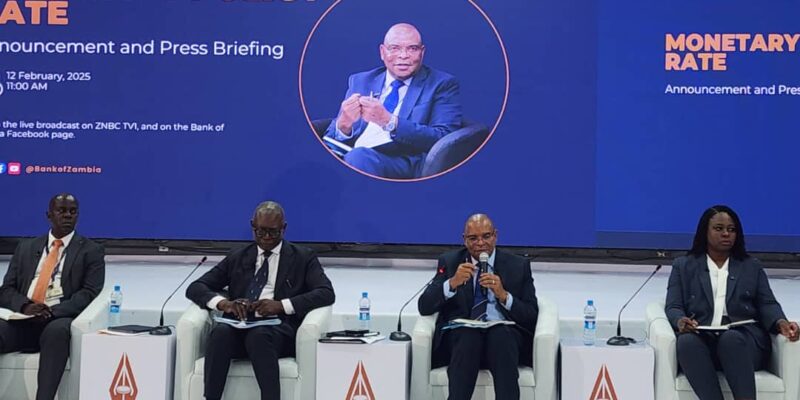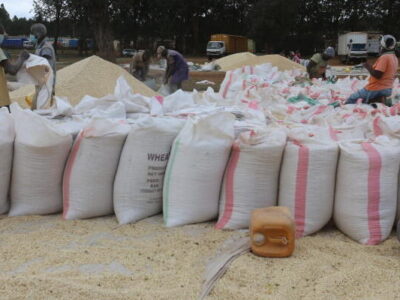The Bank of Zambia (BoZ) has raised the benchmark lending rate by 50 basis points to 14.5 percent in a bid to curb persistent inflation and guide it back toward the target range of 6-8 percent.
This increase means borrowing costs in Zambia would rise, potentially slowing down economic activity as loans become more expensive.
In a statement made following the Monetary Policy Committee (MPC) meeting held on February 10-11, 2025, Central Bank Governor, Danny Kalyalya, stated that the policy rate increased to 14.5 percent from 14 percent the previous quarter.m
Read more: BoZ may hold policy rate at 14% as inflation remains unchanged in January, say analysts
Kalyalya emphasized that inflation had remained above the target for a sustained period, which prompted the decision to raise the Policy Rate.
“Inflation remains higher than the 6-8 percent medium-term objective, and inflation expectations are elevated. The Committee decided to raise the Policy Rate by 50 basis points to 14.5 percent to help anchor expectations and steer inflation back to the target range,” Kalyalya stated in Lusaka on Wednesday.
The fourth-quarter inflation of 2024 averaged 16.3 percent, up from 15.5 percent, in the previous quarter. The spike was largely attributed to higher emergency electricity tariffs introduced in November 2024 as a result of the drought.
Additionally, the reduced supply of vegetables, fish, and the depreciation of the exchange rate further fueled inflation.
He further stated that non-food inflation rose significantly, from 12.2 percent in October to 14.1 percent due to escalating electricity costs.
Looking ahead, Kalyalya indicated that inflation is expected to remain above the target range for the next two years.
In 2025, inflation is projected to average 14.6 percent, slightly up from the 13.9 percent forecast in the November 2024 MPCstatement.
However, inflation is expected to fall to 10.6 percent by 2026, although it will still be above the target band.
Despite the ongoing inflationary pressures, Kalyalya noted a shift in the risks, with a more favorable outlook for food supply and electricity generation due to improved rainfall patterns.
Kalyalya reiterated that the BoZ stands ready to take further action should inflation persist above the target range, adding that future decisions on the policy rate would continue to be informed by inflation outcomes, forecasts, and any emerging risks related to financial stability.
WARNING! All rights reserved. This material, and other digital content on this website, may not be reproduced, published, broadcast, rewritten or redistributed in whole or in part without prior express permission from ZAMBIA MONITOR.












Comments